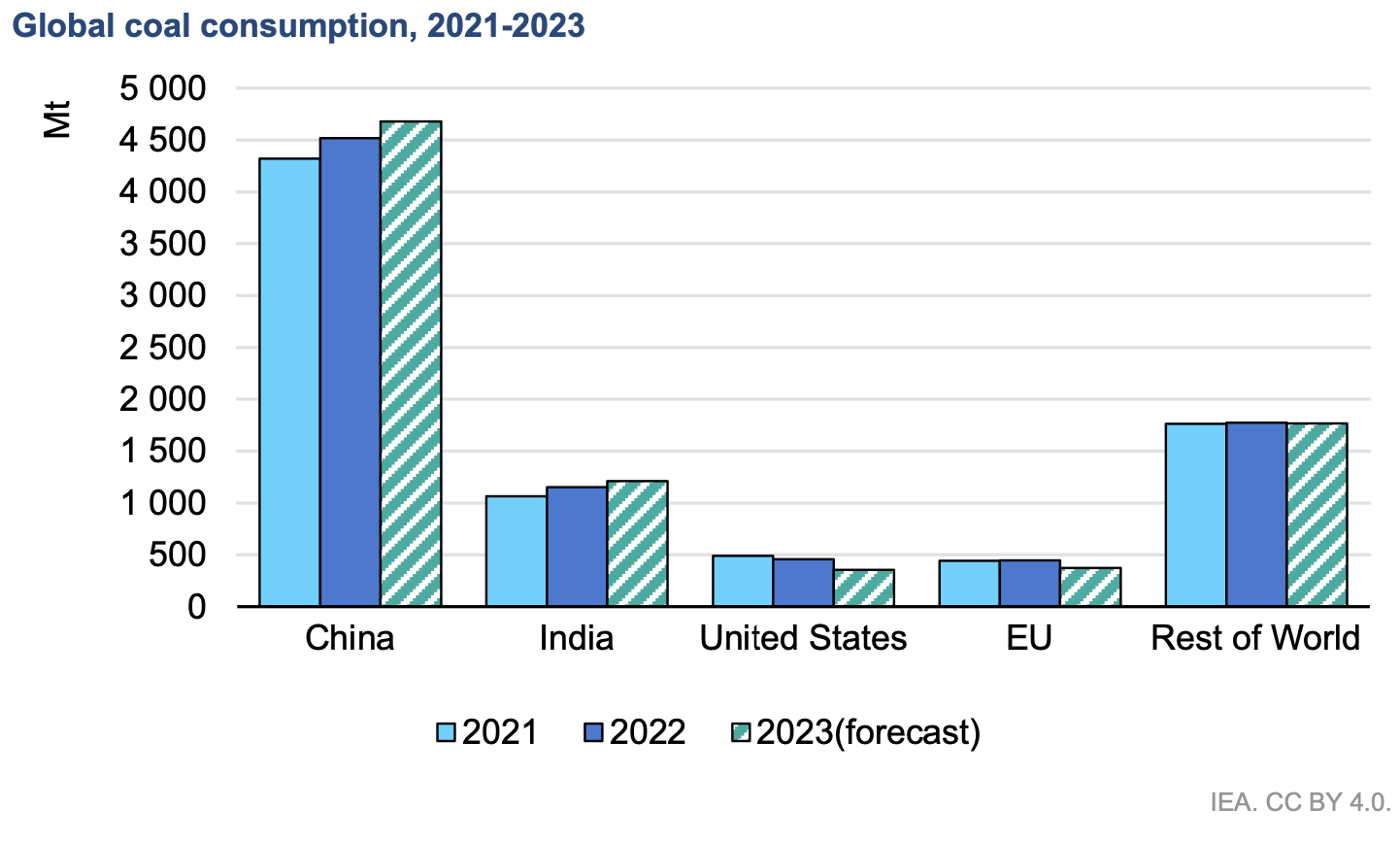Global Coal Consumption Expected to Remain At Record Levels In 2023

The International Energy Agency (IEA) in its July 2023 Coal Market Update reported that the demand for coal hit a historic high in 2022, exceeding 8.3 billion tons. The surge came despite a softer global economy, and was largely fueled by coal being more accessible and cost-effective than gas in several regions across the world. The report also noted a decline in nuclear power and hydropower production, leading to a record high of 10440TWh of electricity generated from coal, amounting to 36% of global electricity production, a 1% increase from 2021.
China led the upsurge, with coal demand increasing by 4.6% to a record 4,519 million tons (Mt). The higher than expected demand was attributed to lower calorific value (CV) of coal produced, resulting in higher volumes and an unexpected spike in coal gasification used for synthetic liquid fuel, plastics, and fertilizer production.
India’s robust economic performance in 2022, boasting a growth rate of 6.9%, resulted in an over 8% increase in coal demand, totaling 1,155 Mt, making it the only country besides China to surpass the 1.1 billion tons mark.
The report highlighted diverging trends in the United States and the European Union. While US coal demand continued its downward trend, decreasing by about 7% to 457 Mt, EU coal demand saw a marginal increase of 0.9% to 448 Mt, driven by power generation to offset non-power use reductions.

The report also pointed out varying trends across Asia. Indonesia witnessed a staggering 36% increase in coal demand to 201 Mt, making it the fifth-largest coal consumer globally. However, countries like Vietnam, Korea, and Taiwan saw a decrease in coal demand.
According to IEA’s projections, coal demand will remain at record highs in 2023. The report forecasts the global demand to rise by about 1.5% in the first half of 2023, supported by a 1% increase in power generation and a 2% increase in non-power generation. While the second half of the year is expected to see a decrease in global coal-fired power generation, overall, the demand for coal is expected to stay stable at around 8,388 Mt in 2023.
After the unpredictability of the economy between of 2020 as 2022, caused by COVID-19, post-pandemic recovery, and the energy crisis post-Russia’s invasion of Ukraine, the markets are expected to stabilize in 2023. The downward trend in coal demand is forecasted to continue in the US and EU due to renewable energy expansion and weak electricity demand.
IEA’s July 2023 Coal Market Update also highlighted the growth in global coal production, reaching a new all-time high in 2022. Despite uncertain economic prospects, global supplies grew by 8% in 2022 to a record 8 634 Mt, driven primarily by China and India. The agency projects a further increase in global coal production in 2023, driven by a strong ramp-up of production in China, India, and Indonesia in the first six months.
The surge in coal production and demand carries significant implications. Higher coal production and consumption contribute significantly to carbon emissions and global warming, as coal is one of the most carbon-intensive fossil fuels. This poses a serious threat to global efforts to curb climate change, and contradicts the global shift towards cleaner, renewable sources of energy.
Increased coal usage also comes with health consequences, as it can worsen air quality, leading to severe health problems such as respiratory diseases and premature deaths.
Popular Now
hub.cleanearth.io Media
Sign Up for the hub.cleanearth.io weekly newsletter
Our biggest stories delivered to your inbox weekly.
By signing up you agree to our Disclaimer, our Privacy Policy & Cookie Statement and to receive marketing and account-related emails from hub.cleanearth.io. You can unsubscribe at any time.







